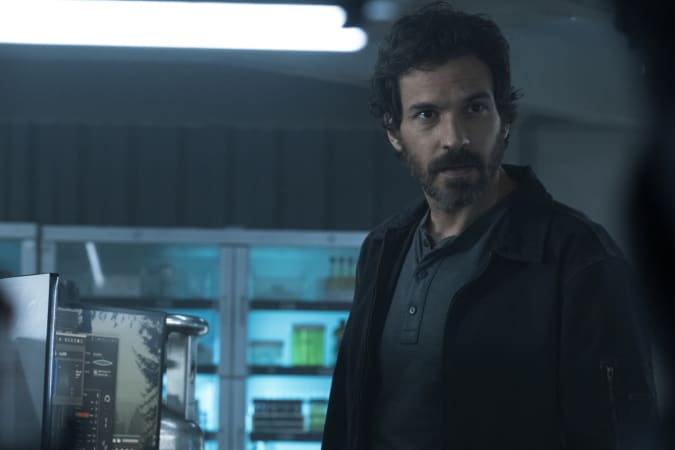‘Star Trek: Picard’ could only exist on a streaming service
The following contains mild spoilers for the finale episode of ‘Star Trek: Picard’ season two.
Picard has always been an outlier in the Star Trek franchise. It’s not a show about a particular ship and its crew; the title indicates that at its heart, it’s about this one character and any unresolved issues he may have had with his life. It hasn’t been the most compelling premise, and its output so far has been divisive among fans. But as the series finishes up its second year and rolls into its third and final season, its ultimate purpose has become more clear, a purpose that wouldn’t have worked for a broadcast show but fits right in with the more intimate confines of a streaming service.
In its first two seasons, Picard has felt rather directionless. Season one was about artificial life, while season two decided to delve into time travel and emotional trauma. It may be a serialized program, but the plotlines and tone have gone all over the place (mostly notably in “Stardust City Rag,” which starts off with a gory torture scene but by the halfway mark the crew is all wearing silly disguises). But between the departures of cast members at the end of season two and the announcement that The Next Generation crew would be appearing in the series in its last season, however, a clear pathway for the program seems to have emerged from the fog.
CBS
The final TNG movie (Nemesis) is generally considered to be awful, with a weak nonsensical plot, some out-of-character moments and just a bad sendoff for fan favorite characters like Data. Picard has sought to heal some of those wounds by giving Data a proper death, Troi and Riker a proper family, and Jean-Luc himself some needed character growth. That last one was a particular sticking point since the finale of the show, “All Good Things,” ended with a message that Picard needs to grow as a person. And then in the films… he just didn’t.
It’s hard to imagine creating a network television show just to fix some problems with a series of films made twenty years ago, which is why Picard is most definitely a product of the streaming model. I’ve talked before how streaming affects the creative development of shows in both good and bad ways. A streaming program is given a full season order before it starts, meaning that creators know they have at least six or 10 or 13 episodes to play with. It’s a big part of why serialized storytelling is even possible, since showrunners no longer fear being cut off in the middle of an ongoing story (like the recently canceled Legends of Tomorrow on the CW, which ended on a big cliffhanger).

CBS
There are also some drawbacks, to be sure; without audience feedback, it means a creator can’t fine-tune a show as it goes along. They can’t make changes at all until the new season starts production. And if the show hasn’t been renewed for another season, they can’t seed plot points in the current season and be sure they’ll pay off. At least with broadcast shows, they may hear of their renewal while still in production, allowing them to add in some hook for the next season.
But as I said, Picard doesn’t have to worry about any of this. The show was intended to be three seasons and no more, and they’ve already shot the entire thing. Many lapsed fans have publicly stated they intend to jump on board merely for the presence of their TNG faves, meaning Paramount+’s streaming strategy does seem to be working in this case.

CBS
And it’s because the show has such a limited life span, because it’s ending up to be less a tentpole than it is a nice little coda for long-time fans, I find it easier to make peace with the show’s existence. Like many viewers I’ve had problems with Picard, some I’ve written about. The same goes for Discovery. But as the Star Trek universe expands and more options become available, each show has a lot less weight to carry.
They no longer have to try to meet every expectation; instead fans have a fuller menu to choose from. Discovery can be for those who like a quirkier Trek with a progressive cast, Picard is for TNG diehards, Lower Decks is for fans who like the sillier aspects of the franchise, Prodigy is for kids and Strange New Worlds is trying to be an old-fashioned-style Trek for fans who literally hated everything else on this list. And I don’t think any of this would have been possible without the streaming model. There may be too many shows to keep up with, but at least it’s easier to find something that fits your unique taste. Whether the growth of streaming is sustainable is yet to be seen (RIP CNN+) but for now, we can enjoy the plethora of options at the buffet.
All products recommended by Engadget are selected by our editorial team, independent of our parent company. Some of our stories include affiliate links. If you buy something through one of these links, we may earn an affiliate commission.
For all the latest Technology News Click Here
For the latest news and updates, follow us on Google News.
